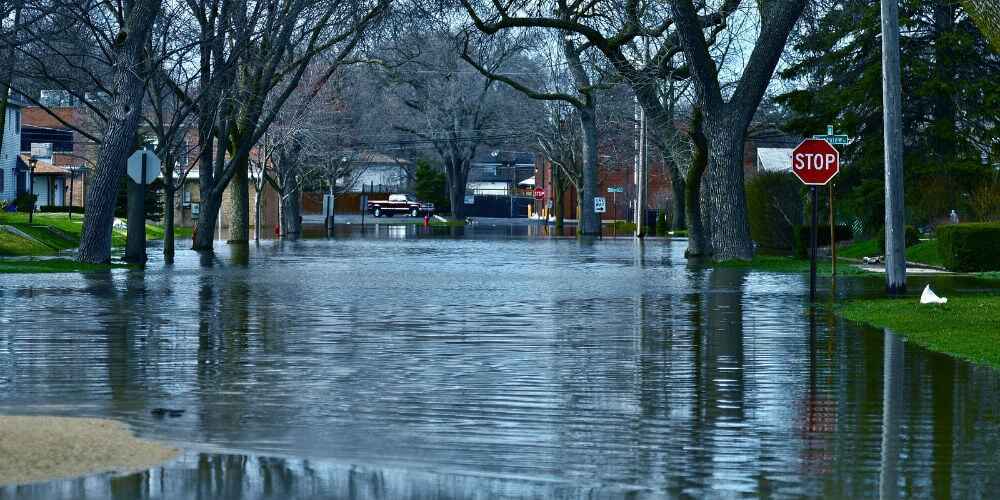Growing Importance of Flood Insurance in Pennsylvania
Flooding is becoming an increasingly severe problem in Pennsylvania due to climate change. Despite the rising risks, most homes in the state remain uninsured for flood damage. To address this, a task force was established to find ways to make flood insurance more accessible and affordable for residents. Here, we break down the key points and recommendations from their report in simple terms.
Flood Insurance in Pennsylvania: The Current Situation
- Rapid Growth: The number of private flood insurance policies in Pennsylvania has grown from about 1,500 in 2016 to nearly 16,000 in 2023.
- Significant Gap: Out of 3.1 million insured homes in the state, only around 50,000 have flood insurance, leaving a large number of homeowners unprotected against flood damage.
Increasing Flood Risks
- Climate Change Impact: The task force emphasized that climate change is increasing the frequency and severity of flood events in Pennsylvania.
- Common Misconception: Many homeowners mistakenly believe their standard insurance covers flood damage, which often leaves them financially vulnerable when floods occur.
The Task Force: Formation and Goals
The Flood Insurance Premium Assistance Task Force was created under Act 22 of 2023. Its main goals were to review the current flood insurance situation in Pennsylvania and make recommendations to improve both its accessibility and affordability. The task force consisted of seven members, including state representatives, senators, and officials from the Pennsylvania Department of Banking and Securities and the Pennsylvania Emergency Management Agency (PEMA). Over six months, they held five meetings and gathered input from consumers, industry experts, and federal partners.
Key Recommendations from the Task Force
1. Office of Community Rating System Assistance (CRSA):
- Purpose: Help communities join FEMA’s CRS program, which provides flood insurance discounts for proactive flood management efforts.
2. Improving Disclosures During Home Buying:
- Legislation: Advocate for laws requiring better disclosure of flood risks and insurance needs to potential buyers.
3. Continuing Education Credits:
- Inclusion: Suggest that flood risk and insurance courses be part of continuing education for insurance producers, real estate agents, and mortgage lenders.
4. Enhanced Education and Outreach:
- Outreach Program: Launch a robust program to inform homeowners, renters, and business owners about the benefits of flood insurance.
5. Tax Credits for Home Mitigation:
- Incentives: Offer tax incentives for homeowners who take preventive actions to mitigate flood damage.
6. Enhanced Coverage for Water Damage:
- Insurance Endorsements: Encourage insurance companies to offer additional coverage for water-related damages.
7. Flood Resilience in Building Codes:
- Incorporation: Advocate for integrating flood resilience into building standards by the Uniform Construction Code Review and Advisory Council.
8. Pennsylvania Flood Insurance Relief Act:
- Legislation: Propose a law allowing state income tax deductions for flood insurance premiums.
9. Innovative Solutions:
- Study: Continue exploring new insurance models like microinsurance and group coverage to improve community resilience.
Addressing Market Challenges
Flooding is one of the most devastating natural disasters in the U.S., causing extensive damage and financial burden. Just an inch of water can cause up to $25,000 in damage. The National Flood Insurance Program (NFIP), created in 1968 to provide affordable flood insurance, has struggled financially due to major disasters like Hurricane Katrina and Superstorm Sandy. New pricing approaches, such as Risk Rating 2.0, aim to ensure premiums reflect actual risk and stabilize the program.
Public Engagement and Expert Input
The task force’s meetings included presentations from FEMA, PEMA, and Penn State Harrisburg, emphasizing the importance of community involvement in flood mitigation and the role of education in increasing flood insurance uptake. The task force's recommendations were shaped by public input, agency collaboration, and expert analysis. Implementing these recommendations may require new laws, funding, and additional resources, but the task force is hopeful that these steps will significantly improve Pennsylvania’s flood resilience.
Conclusion
The task force's report highlights the critical need for better flood insurance coverage in Pennsylvania. With increasing flood risks due to climate change, it’s more important than ever for homeowners to understand the benefits of flood insurance and take steps to protect their properties. By following the task force's recommendations, Pennsylvania can improve its resilience to floods and provide better protection for its residents.



.jpg)
.jpg)





.jpg)











Leave A Comment
0 Comment